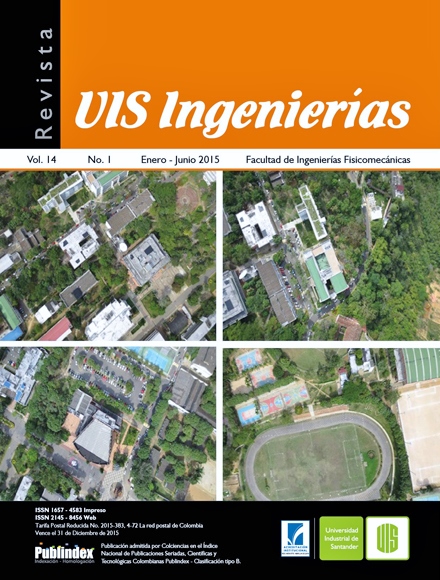Sequential feature analysis in a floating search evaluation and extraction of weak metaclassifiers
Published 2014-11-22
Keywords
- Feature Search,
- pattern recognition,
- data mining,
- dimensionality reduction,
- classification system
How to Cite
Abstract
Feature extraction is one of the most challenging tasks in the design of a classification system. In this work we present a novel floating evaluation and search algorithm focused on weak features. In classification problem with a high number of weak features an exhaustive feature selection protocol is calculation cost prohibitive, so in our approach a floating method is proposed with restricted feature subset evaluation. Our proposal considerably decreases the calculation costs of feature search compared with conventional bottom-up, top-down and floating techniques, as well with other recent techniques, without reducing the classification performance. The proposed methodology was tested for 7-class facial expression recognition and the results show the viability of the approach for multiclass problems with weak features.
Downloads
References
- GUYON, I Feature extraction: foundations and applications.Springer, 2006.
- DEVIJVER, P; KITTLER, J. Pattern recognition:
- A statistical approach. Prentice/Hall International
- Englewood Cliffs, NJ, 1982.
- NAKARIYAKUL, S; CASASENT, D “An
- improvement on foating search algorithms for feature
- subset selection,” Pattern Recognit., vol. 42, no. 9, pp.
- –1940, 2009.
- PENG, Y; WU, Z; JIANG, J.“A novel feature selection
- approach for biomedical data classifcation,” J. Biomed.
- Inform., vol. 43, no. 1, pp. 15–23, 2010.
- GHEYAS, I; SMITH, L. “Feature subset selection in
- large dimensionality domains,” Pattern Recognit., vol.
- , no. 1, pp. 5–13, 2010.
- Z. Q; LU, J.“The elements of statistical learning: data
- mining, inference, and prediction,” J. R. Stat. Soc. Ser.
- A (Statistics Soc., vol. 173, no. 3, pp. 693–694, 2010.
- TRUNK, G. “A problem of dimensionality: A simple
- example,” Pattern Anal. Mach. Intell. IEEE Trans., no.
- , pp. 306–307, 1979.
- AHA, D; BANKERT, R. “A comparative evaluation of
- sequential feature selection algorithms,” in Learning
- from Data. Springer New York, 1996, pp. 199–206.
- WEDD, A; COPSEY, K. Statistical Pattern Recognition,
- third Edition, Third Edit. Wiley, 2011, p. 642.
- SUN, D; ZHANG, D.“Bagging constraint score for
- feature selection with pairwise constraints,” Pattern
- Recognit., vol. 43, no. 6, pp. 2106–2118, 2010.
- GU, Q. et al. “Generalized fsher score for feature
- selection,” arXiv Prepr. arXiv1202.3725, 2012.
- HANCAZAR, B. et al. “Small-sample precision of
- ROC-related estimates,” Bioinformatics, vol. 26, no. 6,
- pp. 822–830, 2010.
- PUDIL, P. et al. “Floating search methods in feature
- selection,” Pattern Recognit. Lett., vol. 15, no. 11, pp.
- –1125, 1994.
- SOMOL, P. et al.“Adaptive foating search methods in
- feature selection,” Pattern Recognigion Lett., vol. 20,
- no. 11, pp. 1157–1163, 1999.
- TIAN, Y. et al. “Recognizing Facial Actions by
- Combining Geometric Features and Regional
- Appearance Patterns,” Robot. Institute, Carnegie
- Mellon Univ. Pittsburgh, PA 15213, p. 31, 2001.
- LUCEY, P. et al. “The Extended Cohn-Kanade
- Dataset (CK+): A complete dataset for action unit and
- emotion-specifed expression,” in Computer Vision and
- Pattern Recognition Workshops (CVPRW), 2010 IEEE
- Computer Society Conference on, 2010, no. July, pp.
- –101.
- VU, N-S; CAPLIER, A.“Face recognition with patterns
- of oriented edge magnitudes,” in Computer Vision--
- ECCV 2010, Springer, 2010, pp. 313–326.
- SILVA, E. et al. “POEM-based facial expression
- recognition, a new approach,” in Image, Signal Processing, and Artifcial Vision (STSIVA), 2012 XVII
- Symposium of, 2012, pp. 162–167.
- JACCARD, P. Coeffcient: Jaccard, Étude comparative
- de la distribution forale dans une portion des Alpes et
- des Jura, vol. 37. Impr. Corbaz, 1901.
- CHA, S-H. “Comprehensive survey on distance/
- similarity measures between probability density
- functions,” City, vol. 1, no. 2, 2007.
- YU, L; LIU, H.“Feature selection for high-dimensional
- data: A fast correlation-based flter solution,” in ICML,
- , vol. 3, pp. 856–863.
- PRESS, W. et al. Flannery, Numerical recipes in C, vol.
- Citeseer, 1996.
- DENG, S. et al. “A feature-selection algorithm based on
- Support Vector Machine-Multiclass for hyperspectral
- visible spectral analysis,” J. Food Eng., vol. 119, no. 1,
- pp. 159–166, 2013.

